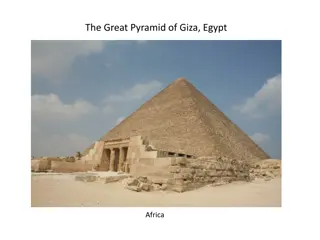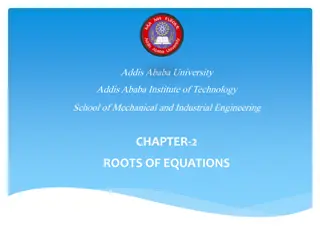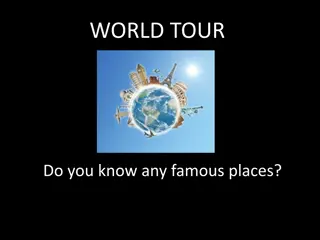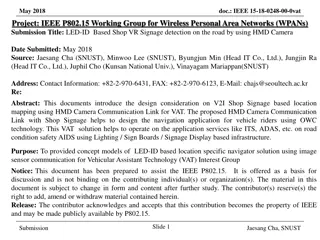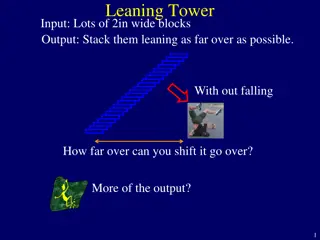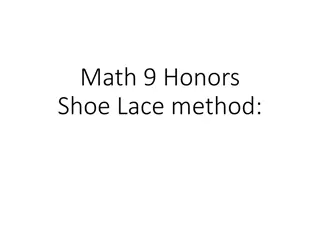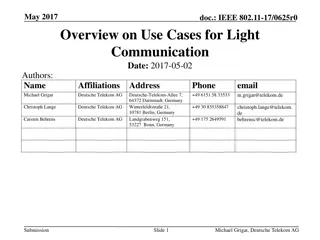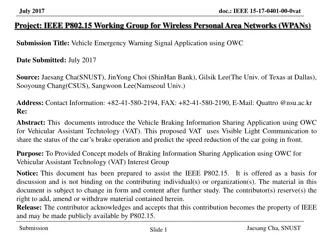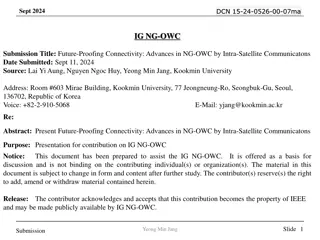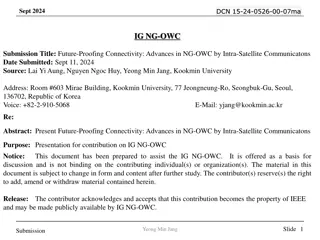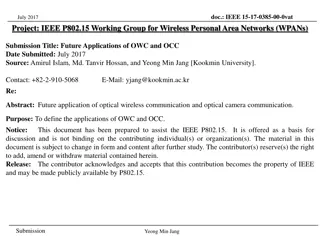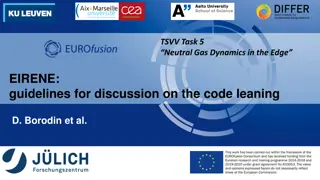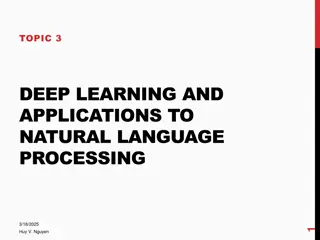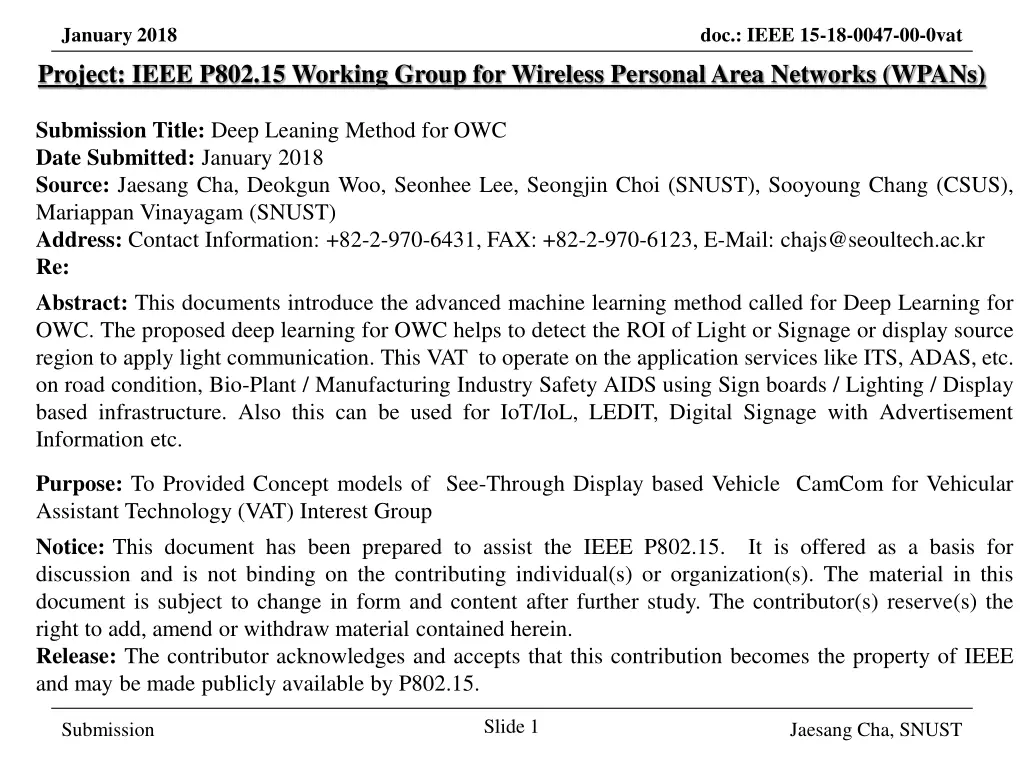
Deep Learning for Optical Wireless Communication
This document introduces the application of deep learning for Optical Wireless Communication (OWC) to enhance detection of Light or Signage sources for light communication. It addresses the need for advanced machine learning techniques in OWC to improve performance in dynamic environmental conditions and applications such as ITS, ADAS, and IoT. Deep learning offers a powerful method for automatically learning rich hierarchical representations for enhanced OWC performance.
Download Presentation

Please find below an Image/Link to download the presentation.
The content on the website is provided AS IS for your information and personal use only. It may not be sold, licensed, or shared on other websites without obtaining consent from the author. If you encounter any issues during the download, it is possible that the publisher has removed the file from their server.
You are allowed to download the files provided on this website for personal or commercial use, subject to the condition that they are used lawfully. All files are the property of their respective owners.
The content on the website is provided AS IS for your information and personal use only. It may not be sold, licensed, or shared on other websites without obtaining consent from the author.
E N D
Presentation Transcript
January 2018 Project: IEEE P802.15 Working Group for Wireless Personal Area Networks (WPANs) doc.: IEEE 15-18-0047-00-0vat Submission Title: Deep Leaning Method for OWC Date Submitted: January 2018 Source: Jaesang Cha, Deokgun Woo, Seonhee Lee, Seongjin Choi (SNUST), Sooyoung Chang (CSUS), Mariappan Vinayagam (SNUST) Address: Contact Information: +82-2-970-6431, FAX: +82-2-970-6123, E-Mail: chajs@seoultech.ac.kr Re: Abstract: This documents introduce the advanced machine learning method called for Deep Learning for OWC. The proposed deep learning for OWC helps to detect the ROI of Light or Signage or display source region to apply light communication. This VAT to operate on the application services like ITS, ADAS, etc. on road condition, Bio-Plant / Manufacturing Industry Safety AIDS using Sign boards / Lighting / Display based infrastructure. Also this can be used for IoT/IoL, LEDIT, Digital Signage with Advertisement Information etc. Purpose: To Provided Concept models of See-Through Display based Vehicle CamCom for Vehicular Assistant Technology (VAT) Interest Group Notice: This document has been prepared to assist the IEEE P802.15. It is offered as a basis for discussion and is not binding on the contributing individual(s) or organization(s). The material in this document is subject to change in form and content after further study. The contributor(s) reserve(s) the right to add, amend or withdraw material contained herein. Release: The contributor acknowledges and accepts that this contribution becomes the property of IEEE and may be made publicly available by P802.15. Slide 1 Submission Jaesang Cha, SNUST
January 2018 doc.: IEEE 15-18-0047-00-0vat Contents Needs for Deep Learning Deep Learning Deep Leaning on OWC Conclusion Slide 2 Submission Jaesang Cha, SNUST
January 2018 doc.: IEEE 15-18-0047-00-0vat Needs for Deep Learning Traditional OWC needs hand-crafted feature representation (Uses Computer Vision) method and leaning method (Machine Learning) to decoded the data from light sources using Image Sensor Traditional Computer Vision (CV) with Machine Leaning on Object Detection and Recognition has limitations Processing hand-crafted feature extraction and features learning is intensive operations, needs time, high computation and memory resources. Performance of Feature Leaning is not resistive in the dynamic changing environment Lighting Condition (Illumination) variation and dynamic environment changes complicates the design of robust algorithms because Environmental climate conditional changes like Foggy, Raining, Snowing, Windy conditions affects performance robustness Need Adaptive Method to work with robust perception as human brain does for VAT OWC Deep Leaning Slide 3 Submission Jaesang Cha, SNUST
January 2018 doc.: IEEE 15-18-0047-00-0vat Deep Learning Deep Learning Deep Learning is a type of learning mechanism A powerful class of machine learning model Modern reincarnation of artificial neural networks Collection of simple, trainable mathematical functions Deep learning seeks to learn rich hierarchical representations (i.e. features) automatically through multiple stage of feature learning process. Learning Hierarchical Representations is Biologically Inspired High-level features Mid-level features Trainable classifier Low-level features Slide 4 Submission Jaesang Cha, SNUST
January 2018 doc.: IEEE 15-18-0047-00-0vat Deep Learning on OWC Deep Learning Methods Deep Neural Networks (DNNs) Convolutional Neural Networks (CNNs) Recurrent Neural Networks (RNNs) OWC Needed Imaging Operations Effective RoI detection on dynamic environment with varying light conditions like traffics, rainy , foggy, snowing, windy, etc Object recognition Classifications to classify pedestrian , vehicles, street lights, sign boards, on-road signange, etc OWC Data Decoding Deep Learning for OWC Convolutional Neural Networks (CNNs) perform well for OWC Convolutional Neural Networks (CNNs) has been designed specifically for Object recognition and classifications Slide 5 Submission Jaesang Cha, SNUST
January 2018 doc.: IEEE 15-18-0047-00-0vat Deep Learning on OWC How CNN Works Each image used in learning is divided into compact topological portions, each of which will be processed by filters to search for particular patterns Formally, each image is represented as a three-dimensional matrix of pixels (width, height, and color), and every sub-portion is put on convolution with the filter set In other words, scrolling each filter along the image computes the inner product of the same filter and input This procedure produces a set of feature maps (activation maps) for the various filters By superimposing the various feature maps of the same portion of the image, we get an output volume Slide 6 Submission Jaesang Cha, SNUST
January 2018 doc.: IEEE 15-18-0047-00-0vat Deep Learning on OWC CNN Architecture A CNN is a list of layers that transform the input data into an output class/prediction. There are a few distinct types of layers: Convolutional layer Non-linear layer Pooling layer Normalization (Optional) Submission Jaesang Cha, SNUST Slide 7
January 2018 doc.: IEEE 15-18-0047-00-0vat Conclusion Introduced the Deep Learning Method for VAT OWC Deep leaning improves the performance n the dynamic changing environment and varying Lighting Condition (Illumination) Works well in environmental climate conditional changes like Foggy, Raining, Snowing, Windy conditions affects performance robustness Submission Jaesang Cha, SNUST Slide 8

